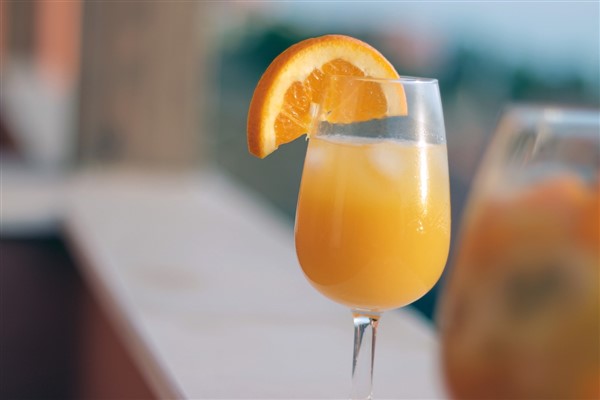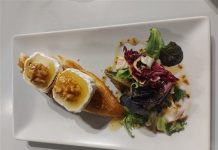Introduction
When it comes to classic brunch beverages, few are as beloved and refreshing as the mimosa. With its vibrant colour and delightful combination of flavours, the mimosa has become a staple at brunch tables around the world. But there’s more to this iconic drink than meets the eye. In this comprehensive guide, we’ll explore everything you wanted to know about a mimosa – from its history and ingredients to tips for crafting the perfect glass.
The Origins of the Mimosa
The mimosa’s roots can be traced back to two distinct sources: its name and its creation. The name “mimosa” is derived from the yellow mimosa flower, which blooms in the spring and is known for its delicate and aromatic petals. This connection to springtime and nature’s vibrancy is fitting for a drink that often graces brunch tables adorned with fresh flowers and cheerful décor.
As for the creation of the drink itself, the credit is often given to a few different sources. One story places its origin in the iconic Ritz Hotel in Paris during the 1920s. Legend has it that bartender Frank Meier mixed equal parts of champagne and chilled citrus juice to create a refreshing libation that reminded him of the mimosa flower.
Ingredients of a Mimosa
A classic mimosa is a simple yet elegant concoction that requires only two main ingredients: champagne (or sparkling wine) and orange juice. The key to a successful mimosa lies in choosing high-quality components. Here’s what you need to consider:
- Champagne or Sparkling Wine: Opt for a dry or extra dry champagne to balance the sweetness of the orange juice. If champagne isn’t within your budget, there are plenty of affordable sparkling wine options that work just as well.
- Orange Juice: Freshly squeezed orange juice is ideal, as it provides a natural sweetness and a burst of citrus flavour. Strive for pulp-free juice to maintain a smooth texture in your drink.
- Proportions: The classic mimosa ratio is equal parts champagne and orange juice. However, you can adjust this ratio to your taste preferences – a drier mimosa might have slightly more champagne, while a sweeter one could have more orange juice.
Crafting the Perfect Mimosa
Now that you’ve gathered your ingredients, it’s time to assemble the perfect mimosa. Follow these steps for a flawless result:
- Chill the Ingredients: Ensure both the champagne and orange juice are well chilled before assembling your drink. You can even chill the champagne flutes for an extra touch of elegance.
- Pour Champagne First: To maintain the drink’s effervescence, pour the champagne into the flute first. Tilt the glass slightly and pour slowly to prevent excessive foam.
- Add Orange Juice: Gently pour the chilled orange juice over the champagne. The two liquids will naturally mix, creating a beautiful gradient of colours.
- Garnish: While optional, a small garnish can elevate the presentation. A twist of orange peel or a raspberry on the rim adds a touch of sophistication.
Exploring Variations and Twists
While the classic mimosa is a delightful choice, there are numerous variations and twists that allow you to customize your drink to your liking:
- Fruit Flavors: Experiment with different fruit juices such as grapefruit, pineapple, or peach for unique flavour profiles.
- Herbal Infusions: Consider adding a splash of elderflower liqueur, rosemary-infused syrup, or lavender extract to add a subtle aromatic twist.
- Frozen Mimosas: Blend champagne, orange juice, and ice to create a frozen mimosa – a perfect choice for warm summer days.
- Mocktail Mimosas: For a non-alcoholic option, use sparkling water or ginger ale in place of champagne. The refreshing taste and bubbly texture remain intact.
Mimosas Beyond Brunch
While mimosas have become synonymous with brunch, their versatility extends beyond the morning hours. Consider incorporating mimosas into other occasions and celebrations:
- Weddings: Mimosas are a popular choice for toasting at weddings. Their cheerful appearance and celebratory nature make them a fitting addition to the festivities.
- Bridal Showers and Baby Showers: Elevate shower events by offering a mimosa bar where guests can mix and match their preferred flavours and garnishes.
- Holiday Gatherings: Mimosas can add a festive touch to holiday gatherings, from Thanksgiving to New Year’s brunches.
In Conclusion
The mimosa’s charm lies in its simplicity and versatility. From its origins as a Parisian creation to its place as a brunch staple around the world, the mimosa has captured the hearts (and palates) of many.
Whether you prefer the classic champagne and orange juice combination or enjoy experimenting with different flavours, there’s no denying that mimosas have a place in our hearts and on our tables. So, the next time you raise a glass of this delightful libation, you’ll have a newfound appreciation for the history, craftsmanship, and endless possibilities of the beloved mimosa. Cheers!










